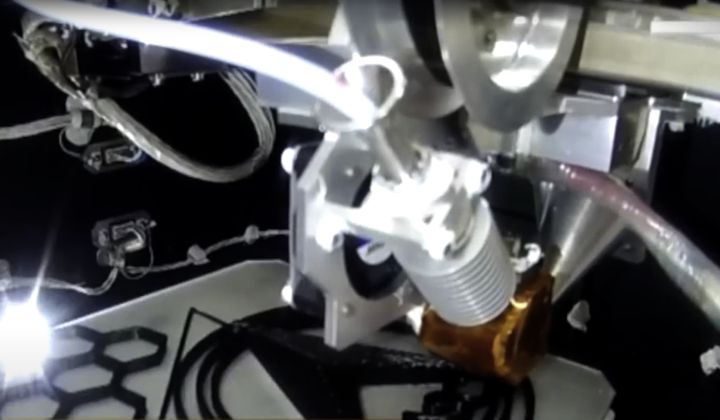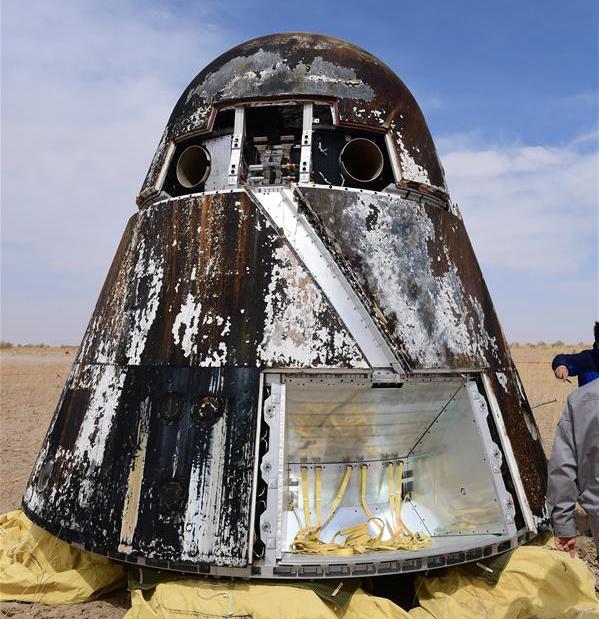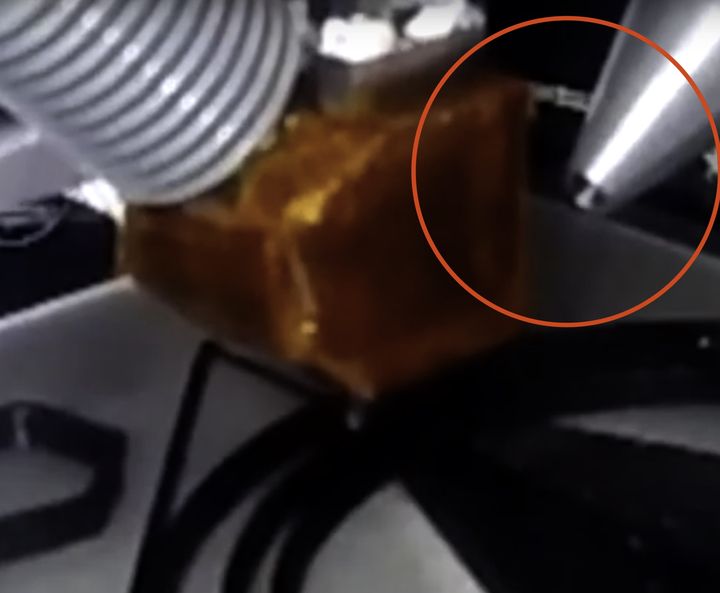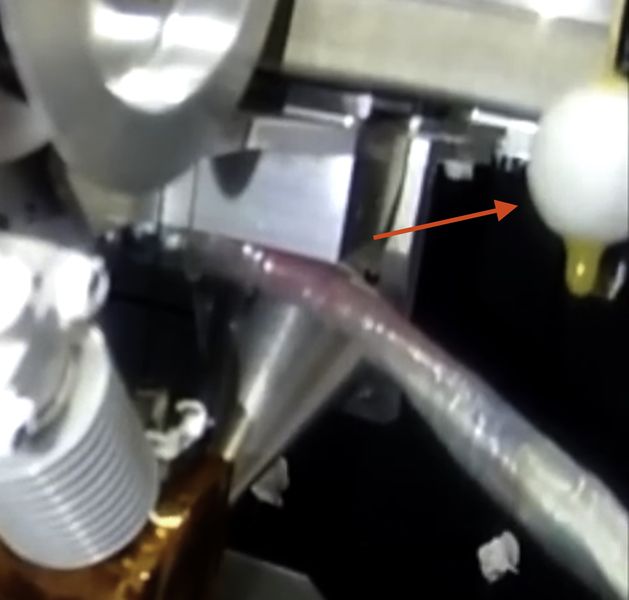
The US may no longer the sole 3D printer operator in space, as China has demonstrated what appears to be a functioning 3D printer on their most recent mission.
In a very brief report on CGTN, a state-funded television network, it is announced that the recent mission involved using a 3D printer, including a brief view of the device, apparently in operation:
3D printing is becoming of significant interest to space-based industry, as it could provide a means to deploy spare (or new) parts electronically to remote operations. It has also been thought of as a way to construct buildings on other celestial bodies.
China’s Next-Generation Crewed Spacecraft Test Vehicle

This 3D printer was apparently launched to orbit as part of China’s effort to replace their aging Shenzhou spacecraft. On 5 May 2020 a Long March 5B rocket launched the “Next-Generation Crewed Spacecraft Test Vehicle“. Despite the awkward name, which will presumably be updated before humans ride it to space, the vehicle is much larger and more well-equipped. It’s intended that future Chinese human space missions will use this new spacecraft not only to Earth orbit, but well beyond, even to the Moon itself.
This first mission was unmanned as many technologies were clearly being tested. One of them was the aforementioned 3D printer, which was quite a surprise.
China Space 3D Printer

There’s virtually no information I can find online about this device, so all I have to go on is the short video. There are some facts that can be derived from the video:
- The 3D printer appears to use a standard filament extrusion process, with a single filament path. It’s not clear what size of filament is used, but I’d guess 1.75mm
- A conventional hot end is partly visible, with cooling fins as one would find on many desktop 3D printers
- The build plate appears to be heated glass, perhaps with an adhesive coating
- The hot end is oriented at an angle to the build plane, which is quite unusual. It’s not clear why this is so
- There is a surprising lack of air ducting around the cooling fins. The cooling fan, visible just behind the fins, will clearly be inefficient. Perhaps ducting was eliminated to ensure the camera could see the print operations? Or perhaps the ambient temperature in the build chamber was cool?
- A conical structure behind the hot end could be the cooling apparatus for fresh extrusions. Unlike the absent ducting for the hot end cooling, this duct is made of metal. However, this arrangement seems quite inefficient as the cool air would disperse before hitting the hot filament. Also, why would this be made of heavy metal when it can easily function if made from lightweight plastic? On a spacecraft, every gram counts!
- There is an extremely interesting wobbly item at the top right of the video. It seems to be attached to the motion system and rocks back and forth as the carriage moves. However, this pendulum-like motion very clearly indicates gravity is in force: This video was NOT taken in orbit!

China 3D Printer Video Simulation?
Thus we seem to have a test video, and not an actual live view of the 3D printer in operation while in a weightless state. Certainly ground-based tests would have been undertaken numerous times, and those trials are likely where this video originated.
But with the lack of ducting around the cooling fan and the absence of visible extrusion, it could be that this video is simply a simulated print job. Without seeing actual extrusion, it is not clear whether the print artifacts were printed by this mechanism. If this were a video from a commercial company touting their new 3D printer, I would be extremely suspicious.
It may be that the Chinese government’s policy is to not show a live view of the activity in case it goes wrong. However, that’s what experiments are all about, and how we learn things.
What seems to be happening is that the researchers loaded up a print job and then remotely commenced printing when safely in orbit. Once the capsule returned to Earth the print results could be examined in detail. Clearly, we are not going to see what happened, at least in this video.
We don’t know whether this experiment succeeded or failed, but we now know the Chinese space program is particularly interested in 3D printing technology, and they have plenty of domestic 3D printer manufacturers to help them make it work.
